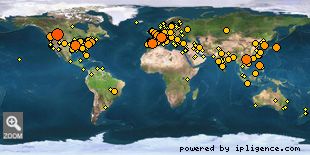 » NMR Jobs
» NMR Jobs |
|
|
|
|
|
|
 » Cool papers
» Cool papers |
|
|
|
|
|
|
 » NMR books
» NMR books |
|
|
|
|
|
|
 » NMR theses
» NMR theses |
|
|
|
|
|
|
 » NMR blogs
» NMR blogs |
|
|
|
|
|
|
 » NMR news
» NMR news |
|
|
|
|
|
|
 » NMR tweets
» NMR tweets |
|
|
|
|
|
|
 » NMR videos
» NMR videos |
|
|
|
|
|
|
 » NMR pictures
» NMR pictures |
|
|
|
|
|
|
 » Online Users: 259
» Online Users: 259 |
| 0 members and 259 guests |
| No Members online |
| Most users ever online was 1,278, 01-09-2024 at 07:38 AM. |
|
 » Welcome!
» Welcome! |
Welcome, NMR world!

Our visitors map.
|

 Enabling site-specific NMR investigations of therapeutic FabĀ*using a cell-free based isotopic labeling approach:Ā*application to anti-LAMP1 Fab Enabling site-specific NMR investigations of therapeutic FabĀ*using a cell-free based isotopic labeling approach:Ā*application to anti-LAMP1 Fab |
|
Mar 28, 2024 - 7:10 PM - by nmrlearner
|
 Enabling site-specific NMR investigations of therapeutic FabĀ*using a cell-free based isotopic labeling approach:Ā*application to anti-LAMP1 Fab
Enabling site-specific NMR investigations of therapeutic FabĀ*using a cell-free based isotopic labeling approach:Ā*application to anti-LAMP1 Fab
Abstract
Monoclonal antibodies (mAbs) are biotherapeutics that have achieved outstanding success in treating many life-threatening and chronic diseases. The recognition of an antigen is mediated by the fragment antigen binding (Fab) regions composed by four different disulfide bridge-linked immunoglobulin domains. NMR is a powerful method to assess the integrity, the structure and interaction of Fabs, but site specific analysis has been so far hampered by the size of the Fabs and the lack of approaches to produce isotopically labeled samples. We proposed here an efficient in vitro method to produce [15N, 13C, 2H]-labeled Fabs enabling high resolution NMR investigations of these powerful therapeutics. As an open system, the cell-free expression mode enables fine-tuned control of the redox potential in presence of disulfide bond isomerase to enhance the formation of native disulfide bonds. Moreover, inhibition of transaminases in the S30 cell-free extract offers the opportunity to produce perdeuterated Fab samples directly in 1H2O medium, without the need for a time-consuming and inefficient refolding process. This specific protocol was applied to produce an optimally labeled sample of a therapeutic Fab, enabling the sequential assignment of 1HN, 15N, 13Cā?², 13CĪ±, 13CĪ² resonances of a full-length Fab. 90% of the backbone resonances of a Fab domain directed against the human LAMP1 glycoprotein were assigned successfully, opening new opportunities to study, at atomic resolution, Fabsā?? higher order structures, dynamics and interactions, using solution-state NMR.
... [Read More]
|

 0 Replies | 115 Views
0 Replies | 115 Views
|
|
 » BioNMR wiki
» BioNMR wiki |
|
|
|
|
|
|
 » NMR discussion
» NMR discussion |
|
|
|
|
|
|
 » NMR conferences
» NMR conferences |
|
|
|
|
|
|
 » NMR software
» NMR software |
|
|
|
|
|
|
 » Pulse sequences
» Pulse sequences |
|
|
|
|
|
|
 » NMR community
» NMR community |
|
|
|
|
|
|
 » NMR presentations
» NMR presentations |
|
|
 » NMR web resources
» NMR web resources |
|
|
|
|
|
|
 » NMR feature requests
» NMR feature requests |
|
|
 » NMR bookmarks
» NMR bookmarks |
|
|
|
|
|
|
 » Stats
» Stats |
Members: 3,202
Threads: 25,730
Posts: 26,116
Top Poster: nmrlearner (23,174)
|
| Welcome to our newest member, bpadmanabhan |
|



